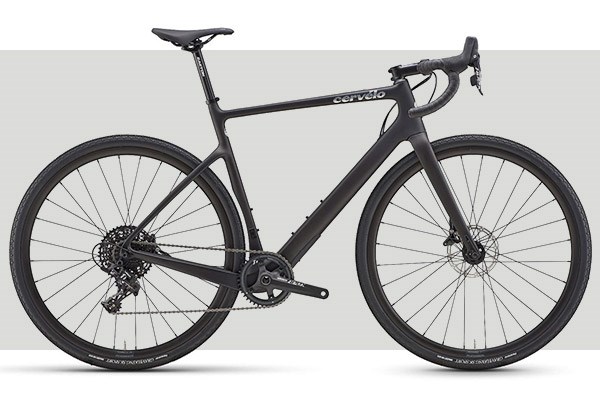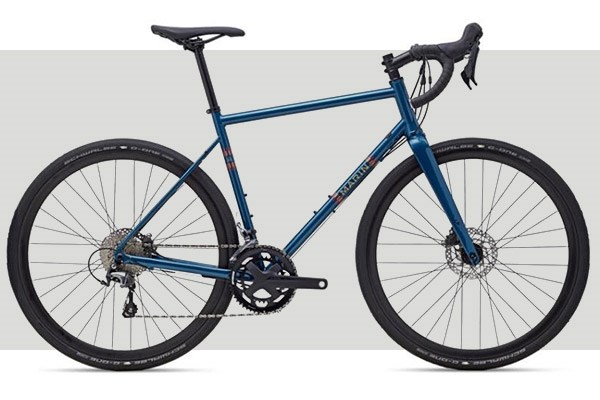What is a Gravel bike?
A gravel bike is a drop handlebar bike designed for a variety of different surfaces. These bikes toe the line between mountain bikes and road/cyclocross bikes. Otherwise known as adventure bikes, they can be used for many different disciplines such as Gravel racing, bikepacking/touring, commuting, and many more! With additional tyre clearance and a much wider range of gearing, Gravel bikes really are the ‘one’ that can do it all.
Let’s take a closer look into the characteristics of what makes a Gravel bike.
Why choose a gravel bike?
Gravel bikes can be used in a variety of different scenarios. These are incredibly versatile and can often do what a hardtail mountain bike can do, and more! Depending on the purpose, Gravel bikes are built from a range of different materials such as steel, titanium, aluminium, and carbon. With additional tyre clearance, these bikes offer additional comfort both for on road and off-road use.
.jpg)
Are you are looking for a versatile winter training bike? Do you love mountain and road, but only have space for one bike at home? Are you looking to do a long backpacking adventure? Do you want to escape the road traffic? If your answer to these scenarios is yes, then a Gravel bike could be for you!
.jpg)
Types of Gravel bikes
With Gravel becoming ever popular in the world of cycling, Gravel bikes can now be diversified into three different types ;
Aggressive Gravel Bikes
With a lower and more aggressive riding position, these bikes are similar to a cyclocross bike but with much more tyre clearance. Often built from lighter materials such as titanium and carbon, these are ideal for gravel racing and training. With the option for a narrower/slick tyre, they are also perfect for road riding and casual road events.

Popular Aggressive Gravel Bikes
Relaxed Gravel Bikes
With a more comfortable geometry giving a more upright position this style of gravel bike is better suited to adventure riding, such as touring and bikepacking. Luggage/mudguard compatibility The taller riding position makes it handle similar to a mountain bike off-road. What they lack in flat-out speed they make up for in comfort on the long-distance days.

Popular Relaxed Gravel Bikes
Suspension Gravel Bikes
With even more compliance than before, suspension gravel bikes are the best of both worlds. Offering additional comfort over rougher terrain, suspension systems like Specialized's STR - Suspend the Rider - and Cannondale's Kingpin micro suspension maintain the instant acceleration and speed of rigid gravel frames but offer more versatility for fully loaded endurance riding.

Popular Suspension Gravel Bikes
Gravel Bike Key Features
Tyre Clearance – To keep your riding options as open as possible it’s a good idea to find out each gravel bike’s maximum tyre clearance before buying. It’s easy enough to choose a pair of 28mm/30mm road tyres for the tarmac, but if a big adventure ride calls for 42mm tyres and your bike can only take 37mm you’re going to be stuck. Be aware that sometimes the measurements provided on the tyre might have a margin of error for mud etc.
Tubeless –Very much in vogue right now, a tubeless setup promises an increase in puncture protection - thanks to the sealant, more squish - thanks to an ability to run lower air pressures as well as a faster ride – thanks to lower rolling resistance. If running tubeless is important to you, be sure to choose a gravel bike with tubeless compatible wheels and tyres..
.jpg)
Gearing –Most mid to high-end gravel bikes will use a 1x groupset for ease and weight saving. Whereas, 2x and 3x groupsets are often found on gravel bikes, at entry level. Often manufacturers will use a mix-and-match of road and mountain bike components to get the best of both world and offer the best gearing possible.
Cassettes –Bikes with a 2 or 3x chainset will often still have a larger cassette than a road bike to still give a wide gear range. 1x gravel bikes will usually have at least a 40 tooth cassette though now 42 and even more teeth are common on high-end gravel bikes. In some cases with sprockets up to 50t!
.jpg)
Disc Brakes – Riding off-road calls for higher-performing brakes. You will want to have additional confidence on those steeper descents and rough, muddy trails. At the lower end of the market, bikes often run mechanically operated brakes, whilst more expensive bikes are equipped with hydraulic disc brakes. Mechanical, or cable-operated, disc brakes don’t offer braking feel quite as good as hydraulic, but are much easier to repair on the road or trailside. As well as offering the best braking performance, hydraulic disc brakes usually require very little maintenance once setup correctly.
Frame Mounts – Gravel and adventure bikes are the perfect partner for bikepacking trips. If you’re buying something to go on this kind of trip it’s a good idea to take stock of your chosen model’s frame mounts. Three bottle cage mounts are perhaps the bare minimum for water carrying requirements. And if you’re going to be using an extra-large frame bag which covers the traditional bottle cages, look for a bike whose forks include mounts too!
.jpg)
Lower Bottom Bracket – A lower bottom bracket (BB) is another common gravel bike feature designed to increase the stability of the bike. A lower BB means the rider sits lower to the ground, reducing their centre of gravity and subsequently helping the bike to handle better and feel more planted.
Wheel Sizes – Gravel bikes will have one of two-wheel sizes. The most popular wheel size and used as standard by most manufacturers is 700c. However, some manufacturers will use 650b (27.5”) as standard depending on the frame clearance. Teaming a 650b wheel with 47mm tyre is the equivalent of running a 700c wheel with a 30mm tyre but with the added benefit of an increase in contact with the ground, adding more comfort. Some gravel bikes are compatible with both wheel standards, enabling you to pop a pair of 700c’s in for a swashbuckling road ride, before substituting in the 650b’s for a rough and tumble hack.
.jpg)






